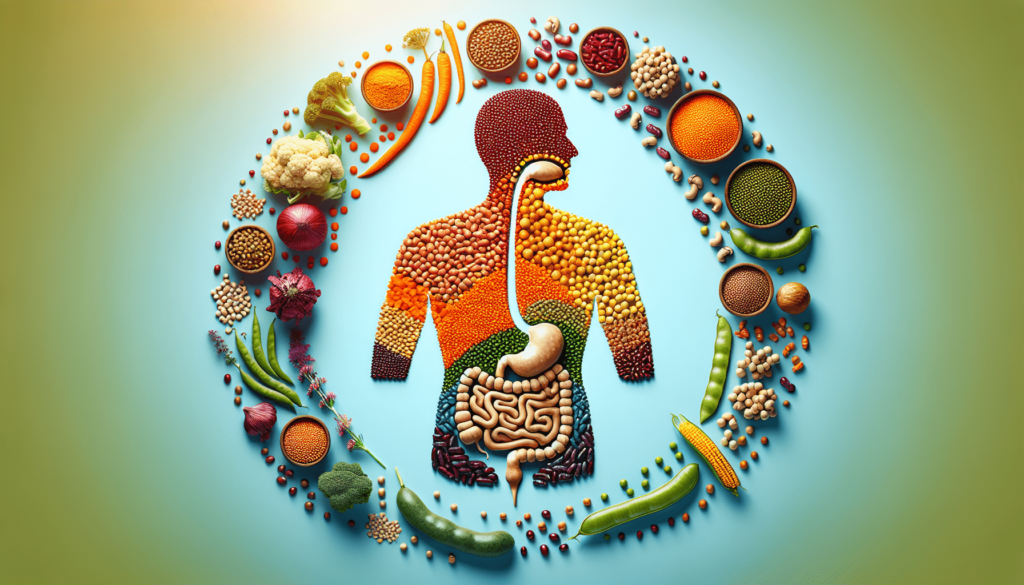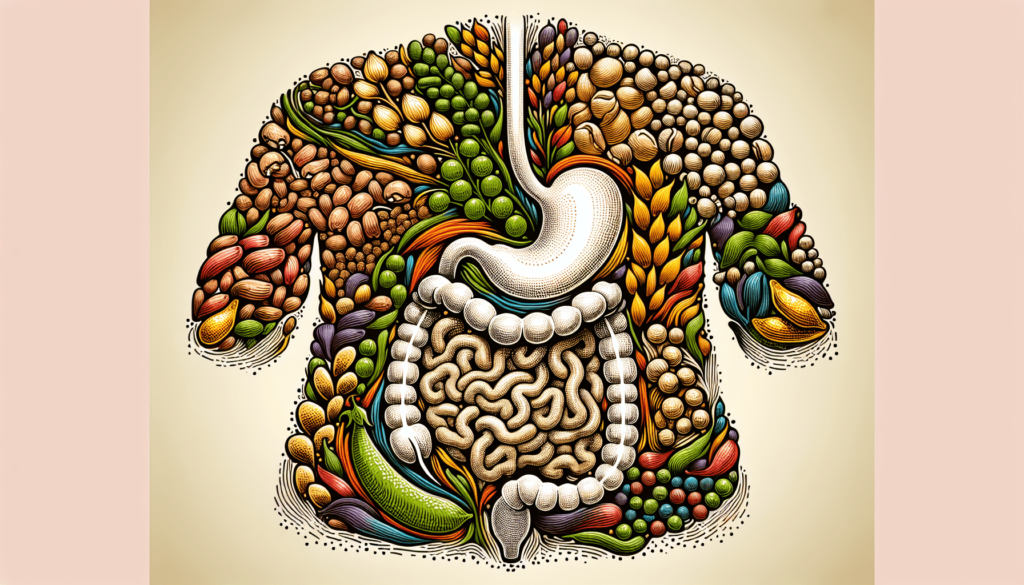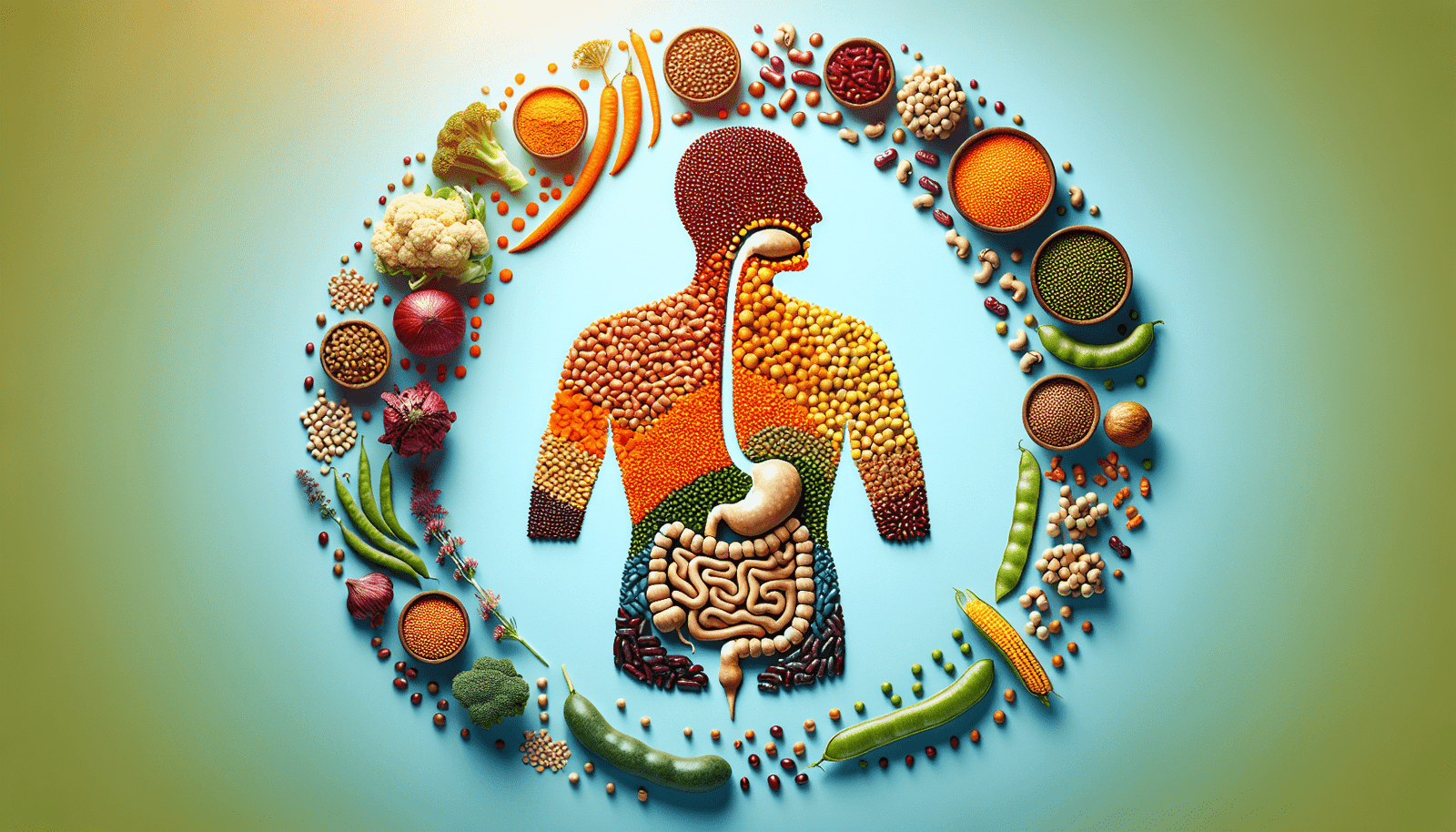In this article, we will explore the topic of legumes and their potential effects on individuals with specific gut conditions. If you have ever wondered whether certain legumes could be causing discomfort or aggravating your digestive issues, then this is the article for you. We will discuss which legumes, if any, should be avoided, and provide helpful insights into maintaining a healthy gut while still enjoying these nutritious plant-based foods. So, if you’ve been curious about how legumes may be impacting your gut health, let’s dive right in and shed some light on the subject!
FODMAPs in Legumes
Definition
FODMAPs, which stands for Fermentable Oligosaccharides, Disaccharides, Monosaccharides, and Polyols, are a group of carbohydrates that can be poorly absorbed in the small intestine and fermented by bacteria in the gut. This fermentation process can lead to symptoms such as bloating, gas, abdominal pain, and diarrhea in individuals with certain gut conditions.
High-FODMAP Legumes
Some legumes are high in FODMAPs and may trigger symptoms in individuals with gut conditions such as irritable bowel syndrome (IBS). Examples of high-FODMAP legumes include chickpeas, lentils, kidney beans, and black beans. These legumes contain oligosaccharides, particularly fructans, which are a type of FODMAP that can be difficult to digest for some people.
FODMAP Gut Conditions
Individuals with conditions such as irritable bowel syndrome (IBS), Crohn’s disease, and ulcerative colitis may have sensitivities to FODMAPs. They may experience symptoms such as abdominal pain, bloating, constipation, and diarrhea when consuming high-FODMAP foods, including certain legumes. It is important for individuals with these conditions to pay attention to their individual responses and work with healthcare professionals to determine their tolerance for legumes and other FODMAP-rich foods.
Lectins in Legumes
Definition
Lectins are a type of protein found in many plants, including legumes. They act as natural defense mechanisms for plants by binding to sugars in the gut, potentially interfering with nutrient absorption and causing gut irritation in some individuals.
Effects on Gut Health
In individuals with certain gut conditions, lectins in legumes can contribute to gut inflammation, leading to symptoms such as bloating, abdominal pain, and diarrhea. However, it is important to note that the impact of lectins on gut health can vary among individuals, and not everyone with a gut condition will experience adverse effects from consuming lectins.
Legume Gut Conditions
For individuals with gut conditions like Crohn’s disease, lectins in legumes can be particularly problematic. Crohn’s disease is marked by chronic inflammation in the digestive tract, and the presence of lectins can exacerbate this inflammation. It is recommended that individuals with Crohn’s disease consult with their healthcare professionals to determine how legumes, or specific legumes, may affect their condition.

Phytates in Legumes
Definition
Phytates, also known as phytic acid, are naturally occurring compounds found in legumes and other plant-based foods. Phytates can bind to minerals such as calcium, iron, and zinc, forming complexes that reduce the bioavailability of these minerals, potentially impacting digestive health.
Effects on Digestive Health
In individuals with certain gut conditions, phytates in legumes can contribute to nutrient deficiencies due to their ability to hinder mineral absorption. For example, individuals with conditions like ulcerative colitis may already have impaired nutrient absorption, and the presence of phytates in legumes can further restrict the availability of essential minerals.
Phytate Gut Conditions
Ulcerative colitis, a form of inflammatory bowel disease, may be particularly sensitive to phytates due to the compromised intestinal function associated with the condition. Individuals with ulcerative colitis may need to consider their individual tolerance for legumes containing high levels of phytates in consultation with their healthcare professionals.
Oligosaccharides in Legumes
Definition
Oligosaccharides are a type of carbohydrate present in legumes, consisting of short chains of sugar molecules. These can include fructans and galacto-oligosaccharides (GOS), both of which can be difficult to digest for some individuals.
Effects on Gut Health
For individuals with certain gut conditions, such as irritable bowel syndrome (IBS), the oligosaccharides in legumes can ferment in the gut, leading to symptoms like bloating, gas, and abdominal pain. These symptoms can be particularly bothersome for individuals with IBS who are already prone to digestive discomfort.
Legume Gut Conditions
Individuals with gut conditions like irritable bowel syndrome (IBS) may need to be cautious when consuming legumes that contain high levels of oligosaccharides. While legumes like chickpeas and lentils provide many nutritional benefits, the presence of oligosaccharides may trigger symptoms in individuals with sensitive digestive systems.

Resistant Starch in Legumes
Definition
Resistant starch is a type of starch that resists digestion in the small intestine and reaches the large intestine intact. Legumes are one of the primary sources of resistant starch in the diet.
Effects on Digestive Health
Resistant starch, when consumed in moderation, can have positive effects on digestive health. It acts as a prebiotic, promoting the growth of beneficial gut bacteria and aiding in regular bowel movements. However, excessive consumption of resistant starch can lead to gas and bloating in some individuals.
Resistant Starch Gut Conditions
While resistant starch can be beneficial for most individuals, those with certain gut conditions may need to monitor their intake. For example, individuals with irritable bowel syndrome (IBS) may be sensitive to the fermentation process of resistant starch, which can lead to symptoms like bloating and discomfort. It is important for individuals with gut conditions to experiment with their tolerance for legumes high in resistant starch and consult with healthcare professionals if necessary.
Common Legume Gut Conditions
Irritable Bowel Syndrome (IBS)
Individuals with irritable bowel syndrome (IBS) often experience symptoms such as abdominal pain, bloating, diarrhea, or constipation. The high FODMAP content and oligosaccharides in certain legumes can exacerbate these symptoms in some individuals. Choosing low-FODMAP legumes and managing portion sizes can help minimize discomfort.
Crohn’s Disease
Crohn’s disease is a chronic inflammatory condition that primarily affects the digestive tract, causing symptoms such as abdominal pain, diarrhea, and weight loss. Individuals with Crohn’s disease may be more sensitive to lectins in legumes, which can worsen inflammation in the gut. Adjusting legume consumption based on individual tolerance, consulting with healthcare professionals, and considering lectin-reduced legumes may be beneficial.
Ulcerative Colitis
Ulcerative colitis is another form of inflammatory bowel disease characterized by inflammation and ulcers in the colon and rectum. The presence of phytates in legumes can hinder the absorption of essential minerals, putting individuals with ulcerative colitis at a higher risk of nutrient deficiencies. Opting for legumes with reduced phytate content or working with healthcare professionals to manage legume consumption can help protect against these potential deficiencies.
Recommended Legumes for Gut Health
Low-FODMAP Legumes
Some legumes are considered low in FODMAPs and are generally well-tolerated by individuals with gut conditions such as irritable bowel syndrome (IBS). Examples of low-FODMAP legumes include green beans, bok choy, and tofu. These legumes provide valuable nutrients without triggering digestive symptoms.
Lectin-Free Legumes
For individuals with conditions like Crohn’s disease who may be particularly sensitive to lectins, choosing legumes that are lower in lectin content might be beneficial. Some legumes with lower lectin levels include lentils, mung beans, and adzuki beans. It is important to note that even lectin-reduced legumes may still contain traces of lectins, so individual tolerance levels should be considered.
Phytate-Reduced Legumes
For individuals with ulcerative colitis or concerns about phytates, selecting legumes that have undergone specific preparation techniques can help reduce phytate levels. Methods such as soaking, fermenting, or sprouting legumes can aid in breaking down phytates and improving mineral bioavailability. Examples of legumes with reduced phytate levels include fermented soy products like tempeh and miso.
Individuals with Specific Gut Conditions
High-FODMAP Legumes and IBS
Individuals with irritable bowel syndrome (IBS) should be mindful of their legume consumption, especially when it comes to high-FODMAP legumes. These legumes, such as chickpeas and kidney beans, can trigger symptoms in individuals with IBS. Experimenting with portion sizes, keeping a food diary, and working with a healthcare professional or registered dietitian can help determine personal tolerances for legumes.
Lectins and Crohn’s Disease
For individuals with Crohn’s disease, the interaction between lectins and gut inflammation can be a concern. It may be helpful to experiment with legumes that are lower in lectins or to consume smaller portions of legumes to gauge individual reactions. Consulting with healthcare professionals who are familiar with the specifics of Crohn’s disease and personalized dietary management is highly recommended.
Phytates and Ulcerative Colitis
Ulcerative colitis can present challenges related to nutrient absorption due to inflammation in the colon. Individuals with this condition should consider working with healthcare professionals to manage legume consumption in order to minimize potential phytate-related nutrient deficiencies. Opting for phytate-reduced legumes or employing preparation techniques like soaking and fermenting may be beneficial.
Managing Legume Consumption
Moderation
When dealing with legumes and gut conditions, moderation is key. While certain legumes may trigger symptoms in individuals with specific gut conditions, others may be well-tolerated in moderate amounts. It is important to pay attention to your body’s response and adjust your consumption accordingly.
Food Preparation Techniques
Certain preparation techniques can help make legumes more digestible and reduce the potential for digestive discomfort. Soaking legumes overnight, fermenting them, or using canned legumes can all aid in breaking down indigestible compounds and making legumes more gut-friendly.
Consulting with a Healthcare Professional
Managing legume consumption in the context of specific gut conditions can be complex. Consulting with a healthcare professional, particularly a registered dietitian or gastroenterologist, can provide valuable guidance and personalized recommendations based on your individual needs. They can help you navigate potential triggers, identify suitable legumes, and develop a customized dietary plan.
Conclusion
Importance of Individualized Approach
When it comes to legumes and gut health, it is crucial to recognize that everyone’s digestive system is unique. What works for one person may not work for another, especially for individuals with specific gut conditions. An individualized approach, taking into account personal tolerances and working with healthcare professionals, is essential for managing legume consumption effectively.
Benefit-Risk Assessment for Each Gut Condition
While some legumes may pose challenges for individuals with certain gut conditions, it is important to weigh the potential risks against the nutritional benefits. Legumes are an excellent source of plant-based protein, fiber, vitamins, and minerals. A benefit-risk assessment, considering factors such as symptoms, disease severity, and individual sensitivities, can help determine the appropriate legumes and portion sizes that promote gut health and overall well-being.

